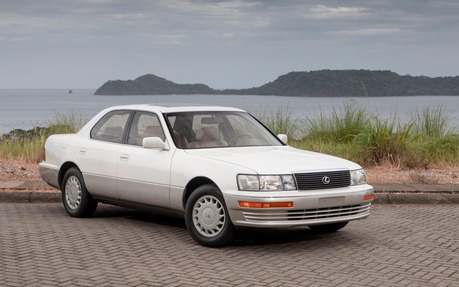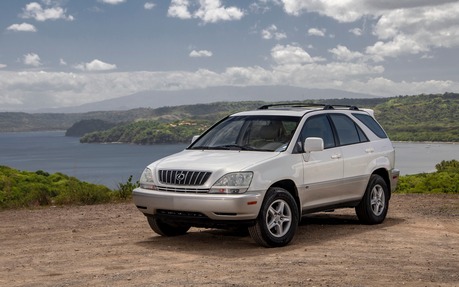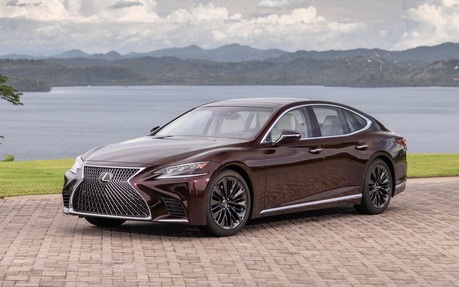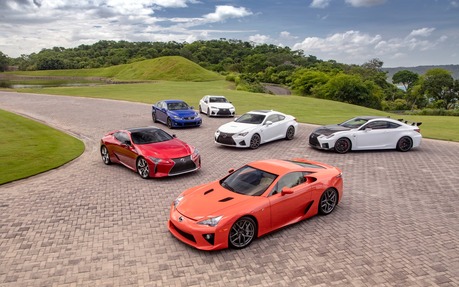30 Years of Lexus
LIBERIA, Costa Rica – As the Japanese automobile manufacturers expanded their business globally in the 1980s, they grabbed a stranglehold of the small-car market in North America. Three of those automakers decided to build on that success and aim to redefine the luxury-car market.
Honda was first, creating the Acura brand, followed a few years later by Nissan and Toyota, who established the Infiniti and Lexus brands, respectively. So far, the latter has been the most successful of the three.
Lexus landed in the United States in 1989, in Canada a year later, and currently sells vehicles in 90 countries. It offers a few car lines, but like the majority of luxury brands, it relies heavily on a wide array of crossovers and SUVs.
The car that started it all was the 1990 Lexus LS 400, which was aimed squarely at the Mercedes-Benz S-Class and the BMW 7 Series. However, during the brand’s development process, the company states that it saw a glaring opportunity to give consumers a refreshingly new purchase and ownership experience. And product reliability, something that was also lacking in premium cars.

A group of Toyota employees was formed in early 1984, under the supervision of president Eiji Toyoda and chief engineer Ichiro Suzuki, and the new flagship car project was internally named Circle F. A 250-km/h top speed was targeted, along with drag coefficient of .28—many of today’s cars still can’t achieve this level of aerodynamism—and a 58-decibel cockpit sound level while travelling at a speed of 96 km/h (60 mph). “Circle F must lift the brand, not just marginally, but enough to alter global perception… and win over discriminating luxury buyers,” the company stated in their presentation to us in Costa Rica—a market Lexus entered in 2012 with one dealership so far.
According to Lexus, more than 450 prototypes were built, 2.7 million miles of road testing were racked up and 1,400 engineers ended up working on the project. During the development process, the marketing strategy called for the creation of a separate dealer network from Toyota, and a different brand name. The LS 400 sedan was finally unveiled at the 1989 Detroit Auto Show, and 81 dealerships across the U.S. opened their doors the first year.
Alongside the full-size LS 400 was the ES 250 midsize sedan, which wasn’t nearly as innovative as the LS, but provided an affordable entry-level choice for discovering what the brand had to offer.

The LS quickly made its mark, but Lexus had to issue a recall regarding the centre high-mounted stop lamp, the cruise control module and a loose connection in the alternator. Recalls are never good, especially when you’re a new company trying to prove yourself. However, Lexus dealers handled the recall notice not by asking the first 8,000 customers to bring their car back to the shop, but by making appointments and showing up at owners’ houses to fix the cars, or to lend a courtesy LS 400 for the duration of the recall fix. Every one of those customers also received a hand-signed apology letter. Lexus succeeded in turning what could’ve been a disastrous situation into a marketing home run.
The SC coupe, GS sedan and LX full-size SUV were added a few years later, but the next breakthrough for Lexus was the launch of the midsize RX 300 in 1999. The brand claims it was the first luxury crossover vehicle in the world, which was built on the ES’s architecture. At the time, all other luxury utility vehicles used a body-on-frame design.
Sales of the RX took off immediately, as customers were attracted by its car-like handling, interior room, elevated driving position and posh accommodations. A few years later, the RX became the first luxury hybrid utility vehicle. Today, the RX is the best-selling vehicle in Lexus Canada’s line-up, followed closely by the compact NX, which hit the market for the 2015 model year. From a global standpoint, the RX accounted for 29% of all Lexus sales (199,000 units) in 2018, and the NX, 25% (172,000 units). The brand expects the 2019 Lexus UX to rack up about 80,000 sales worldwide over the course of this year.
The compact IS sedan was introduced in 1999, designed to go head to head with segment stalwarts such as the BMW 3 Series. The HS 250h hybrid sedan was also launched, but only lasted a few years in Canada and in the U.S. (2010 to 2012) as sales never really picked up. At the time, Lexus also sold the GS 450h, a performance hybrid sedan that dished out 339 horsepower, while the ES 300h hybrid sedan appeared for the 2013 model year.

The company also points out that about ten years ago, and despite the launch of the 2008 Lexus IS F high-performance compact sedan, members of the automotive press mentioned to Akio Toyoda, grandson of founder Kiichiro and newly appointed president of Toyota, that Lexus vehicles had become bland and offered very little driving excitement. Toyoda took that criticism very seriously and urged his team to design and build more engaging vehicles. Which they did.
The F SPORT performance sub-brand appeared, reinforced by the launch of the mighty 2011 Lexus LFA supercar. It boasted a 552-horsepower, 4.8-litre V10 engine and could hit 100 km/h in 3.7 seconds. Only 500 units were produced for worldwide consumption—two of which are in the possession of the Lexus dealer owner in Costa Rica.
Today, Lexus’ North American lineup consists of four sedans, two coupes, three crossovers and two body-on-frame SUVs. A convertible variant of the Lexus LC coupe was just announced at this year’s Goodwood Festival of Speed, and will go on sale by next year. There are other models in faraway markets, such as the Lexus LM minivan in China. The brand even launched a luxo boat called the LY 650.

Thirty years after the flagship LS 400 hit the road, Lexus is getting ready for the next step. Over the next few years, new models with hybrid, plug-in hybrid, fully electric and fuel cell powertrains will be introduced, in addition to a level 2, semi-autonomous highway driving system. By 2025, Lexus will offer 10 electrified vehicles, including at least one in every model range. Lexus is also tinkering with in-wheel electric motors, steer-by-wire technology and what it calls “e-axles.” At the upcoming Tokyo auto show this fall, Lexus will unveil a new, fully electric concept vehicle.
We asked Brian Bolain, General Manager for Lexus International Strategic Communications—who’s been working with the company for more than 30 years—what’s missing in the brand’s lineup right now. He unhesitatingly answered a high-performance utility vehicle to rival such machines sold by Audi, BMW and Mercedes-Benz. In the near future, could we see a NX F or an RX F, powered by, say, the LS 500’s 416-horsepower, twin-turbo V6? We’re purely speculating here, but why not?
